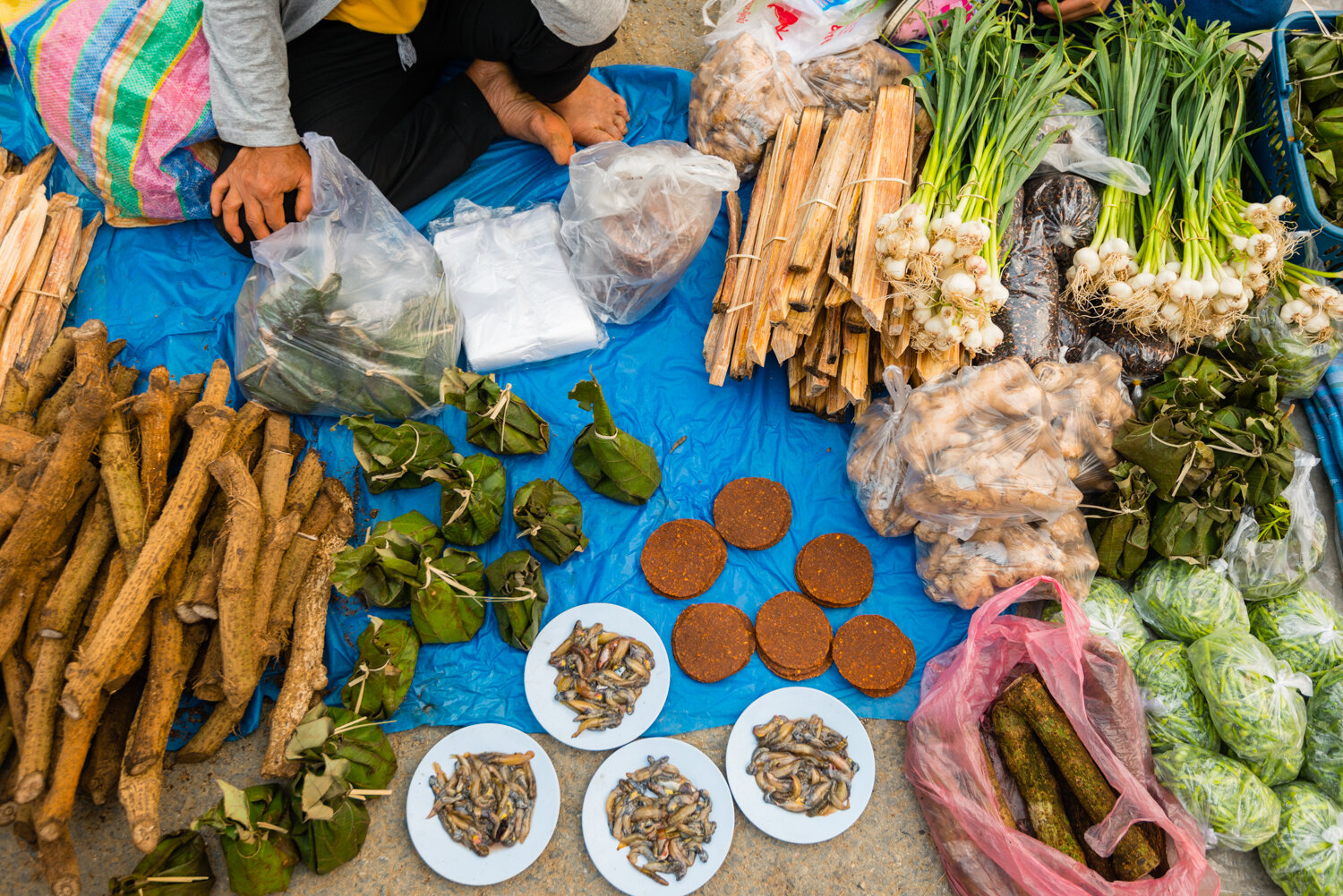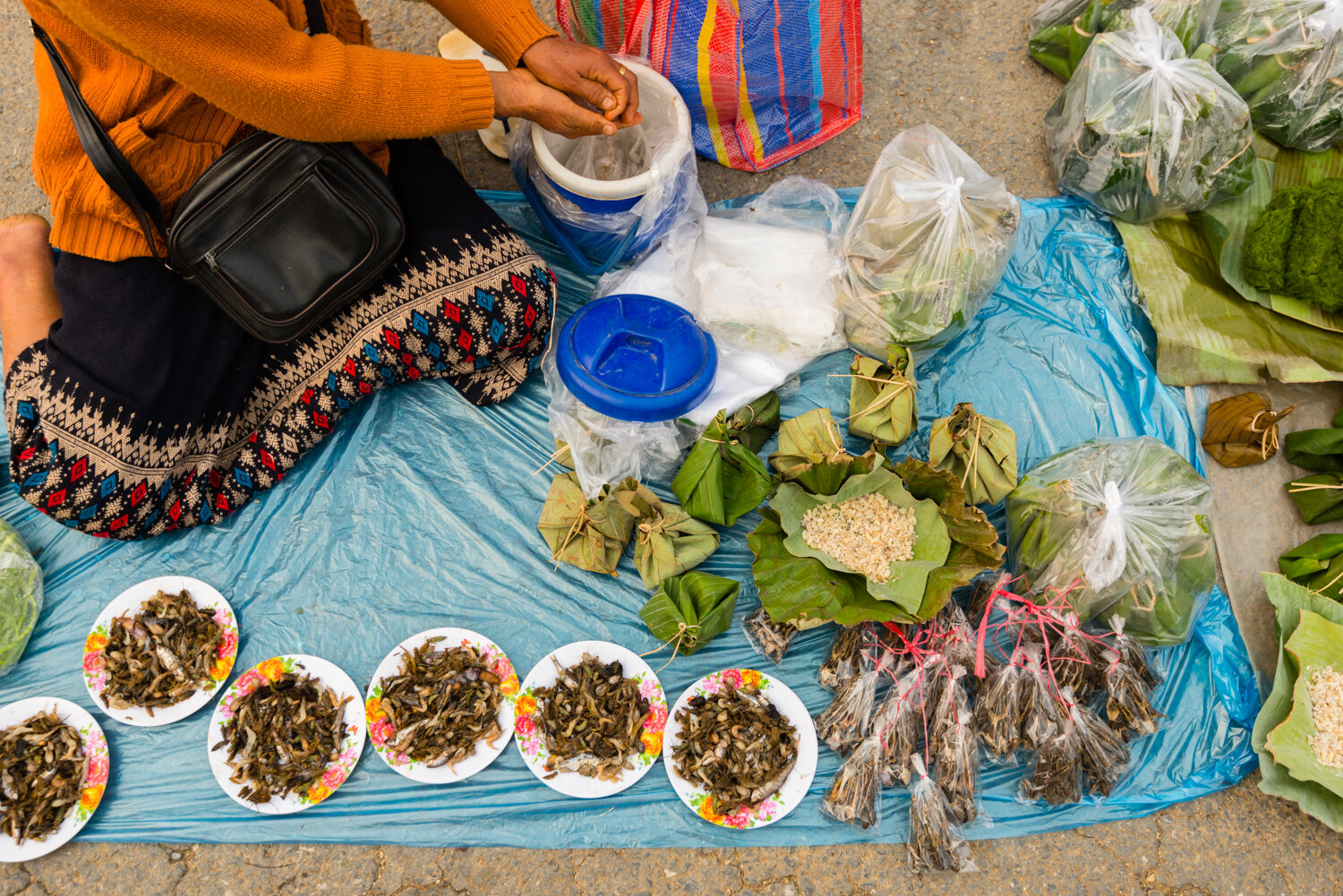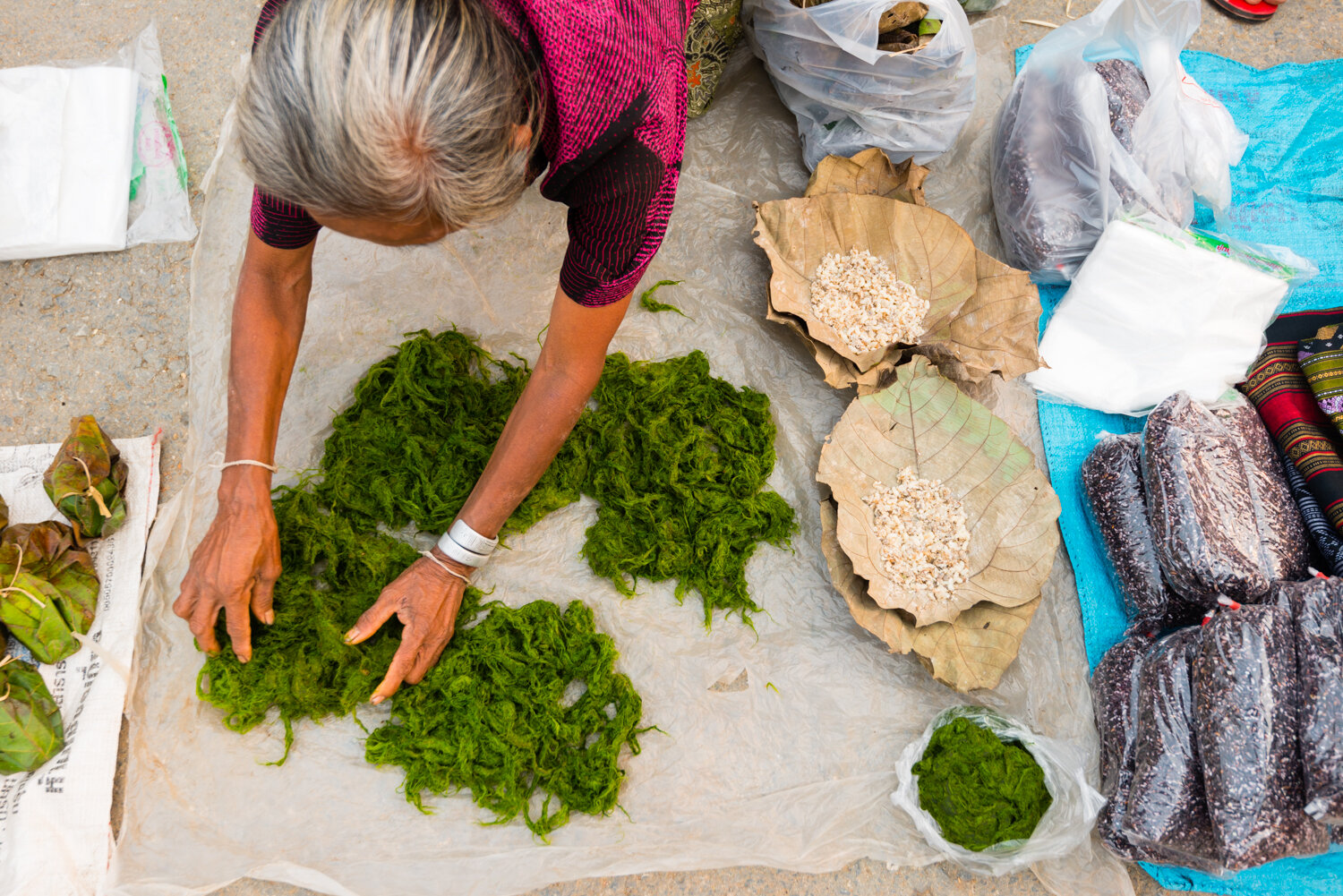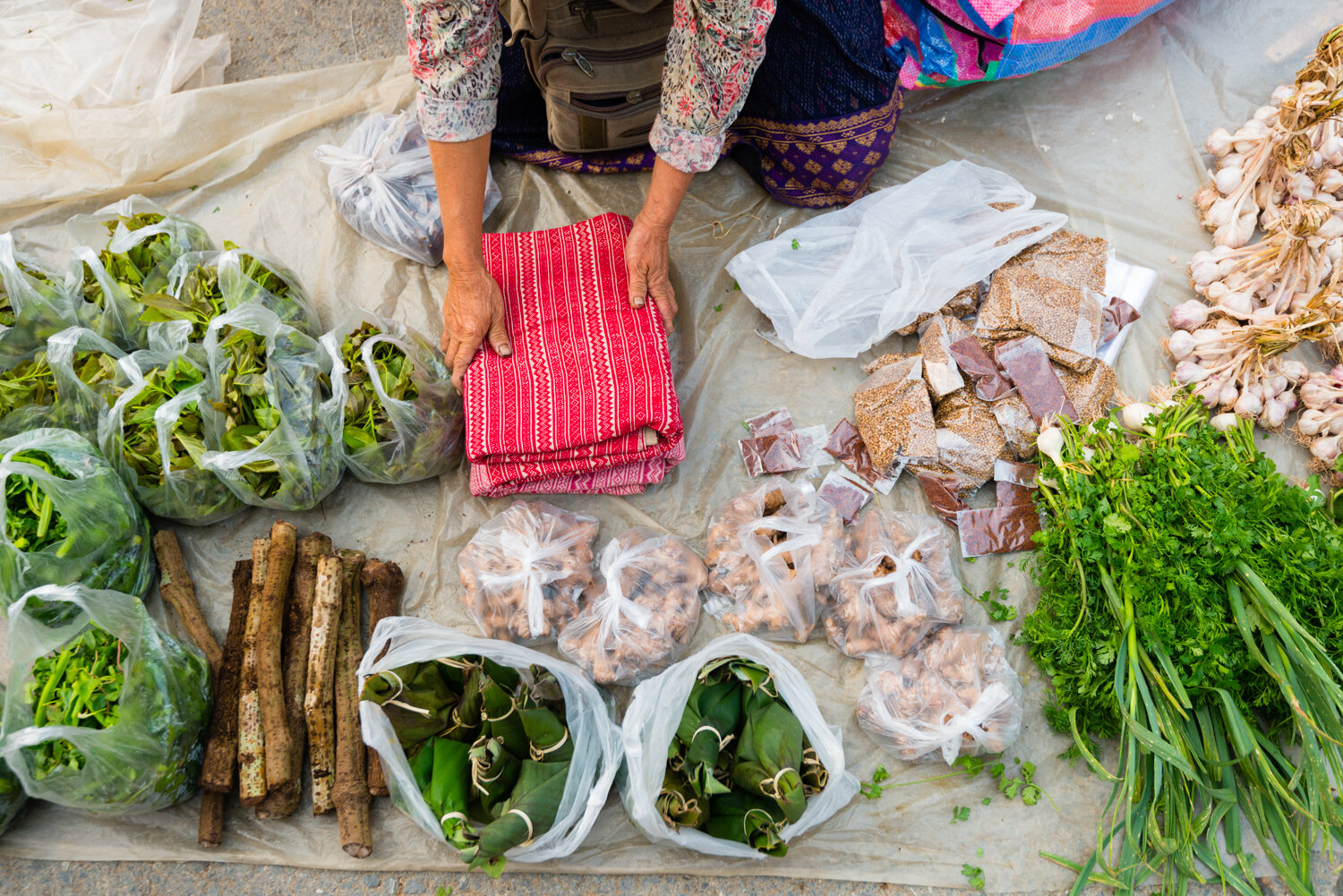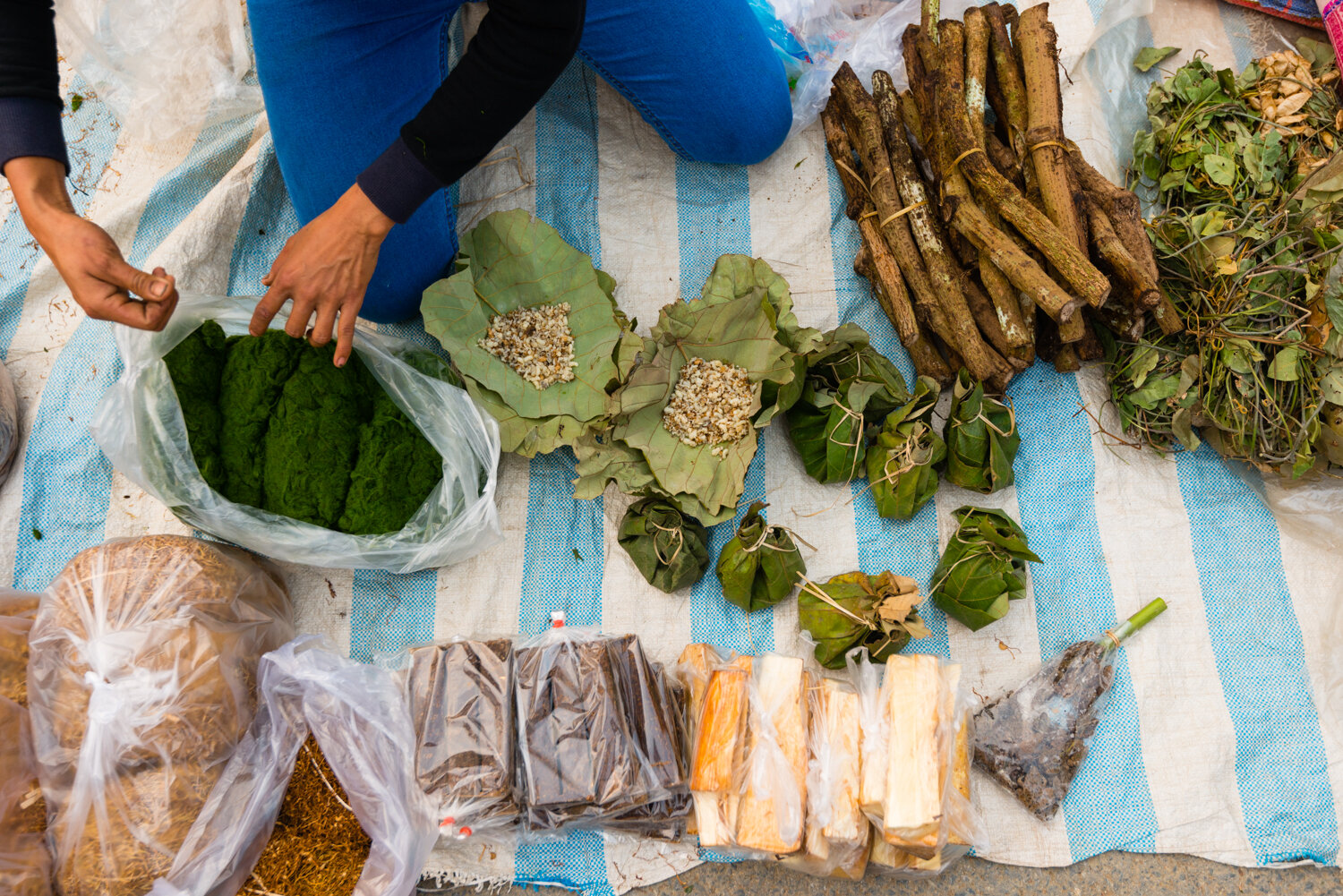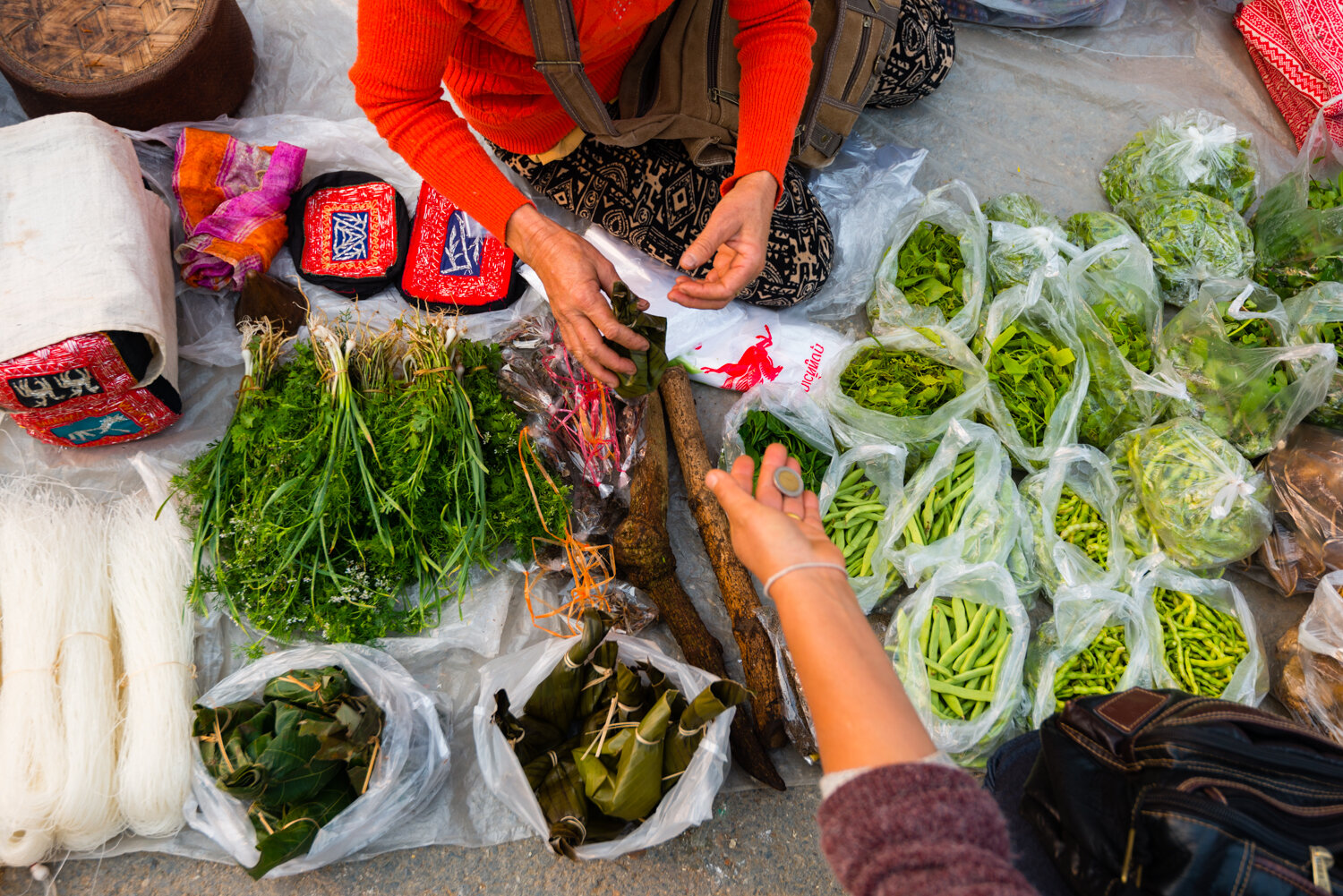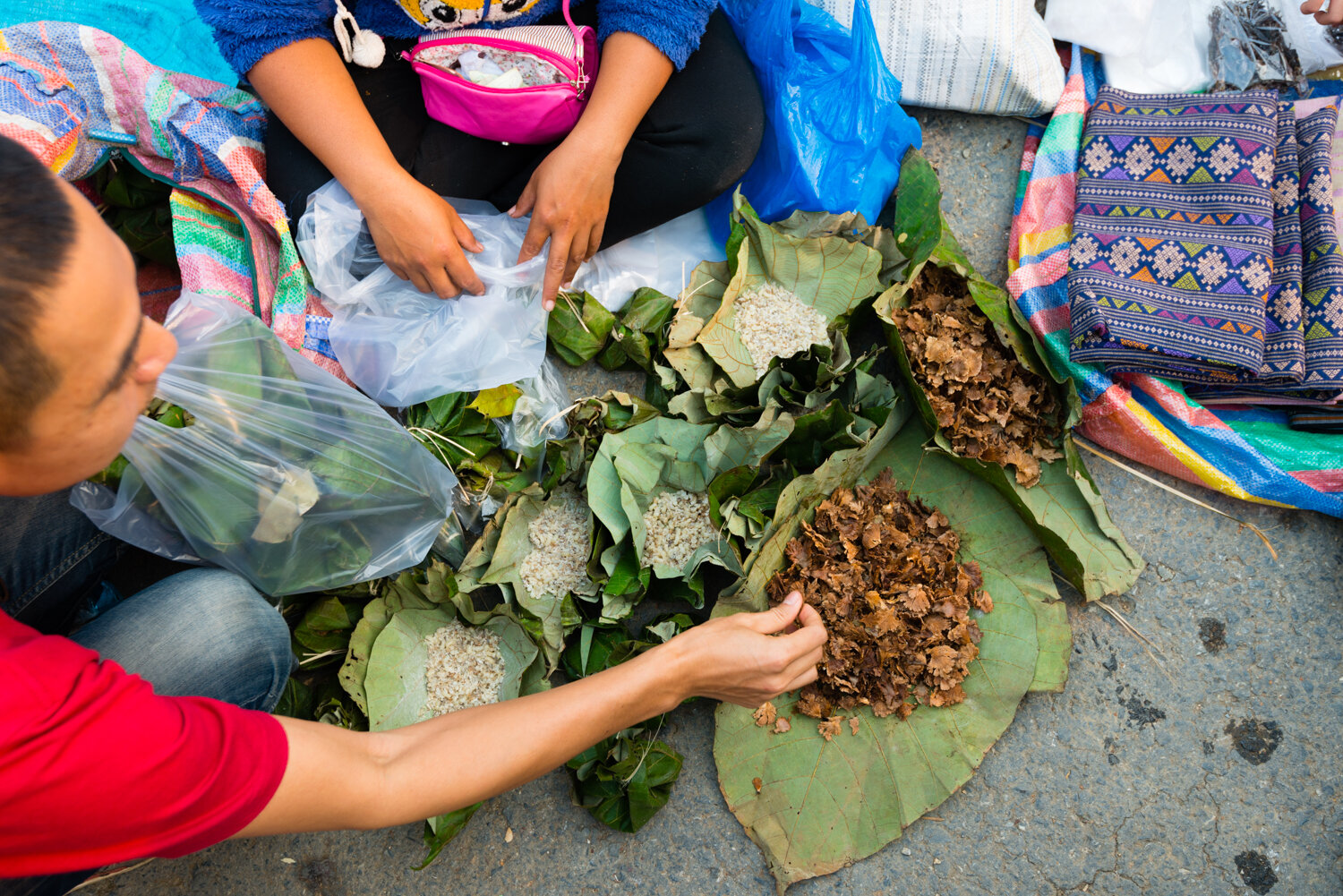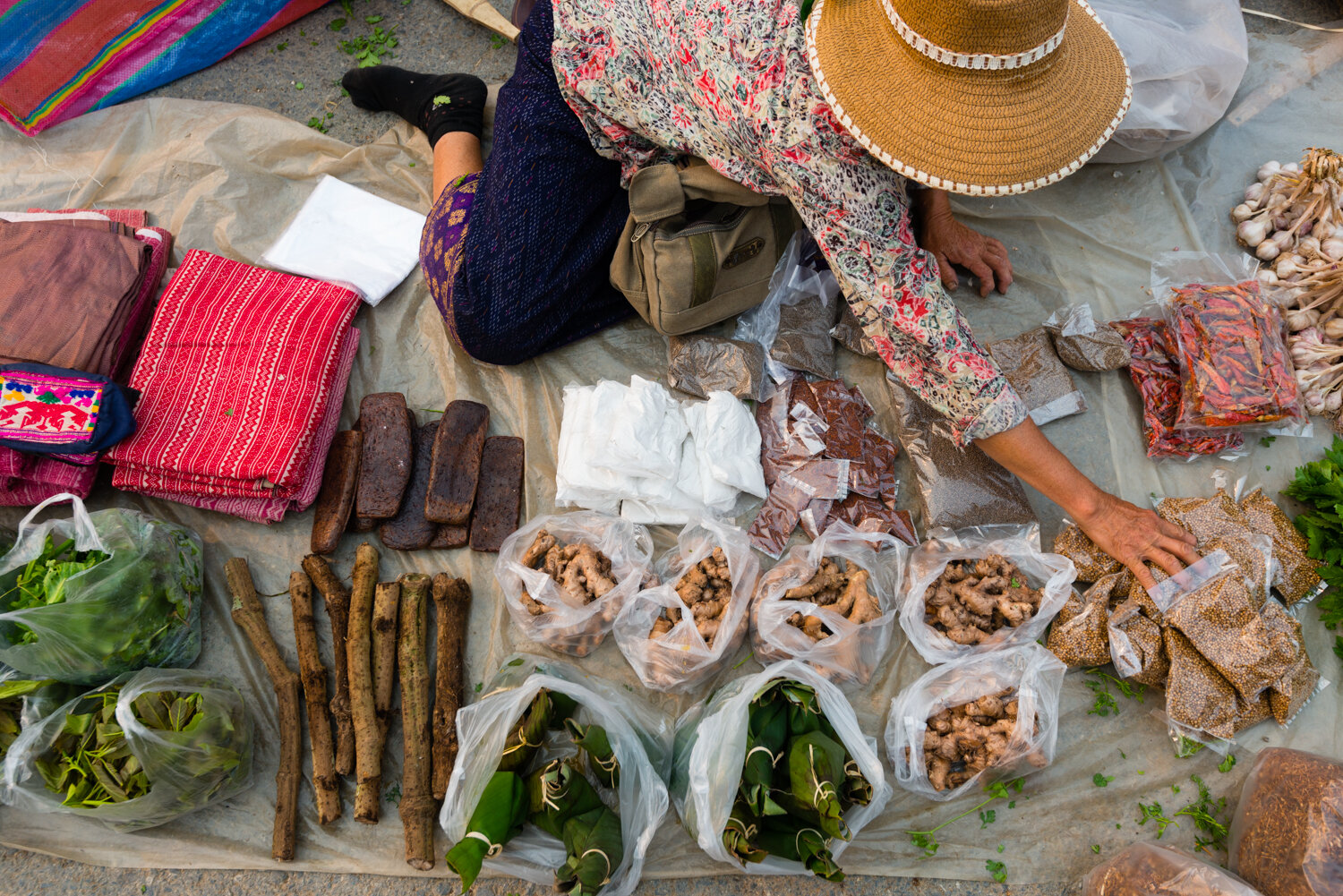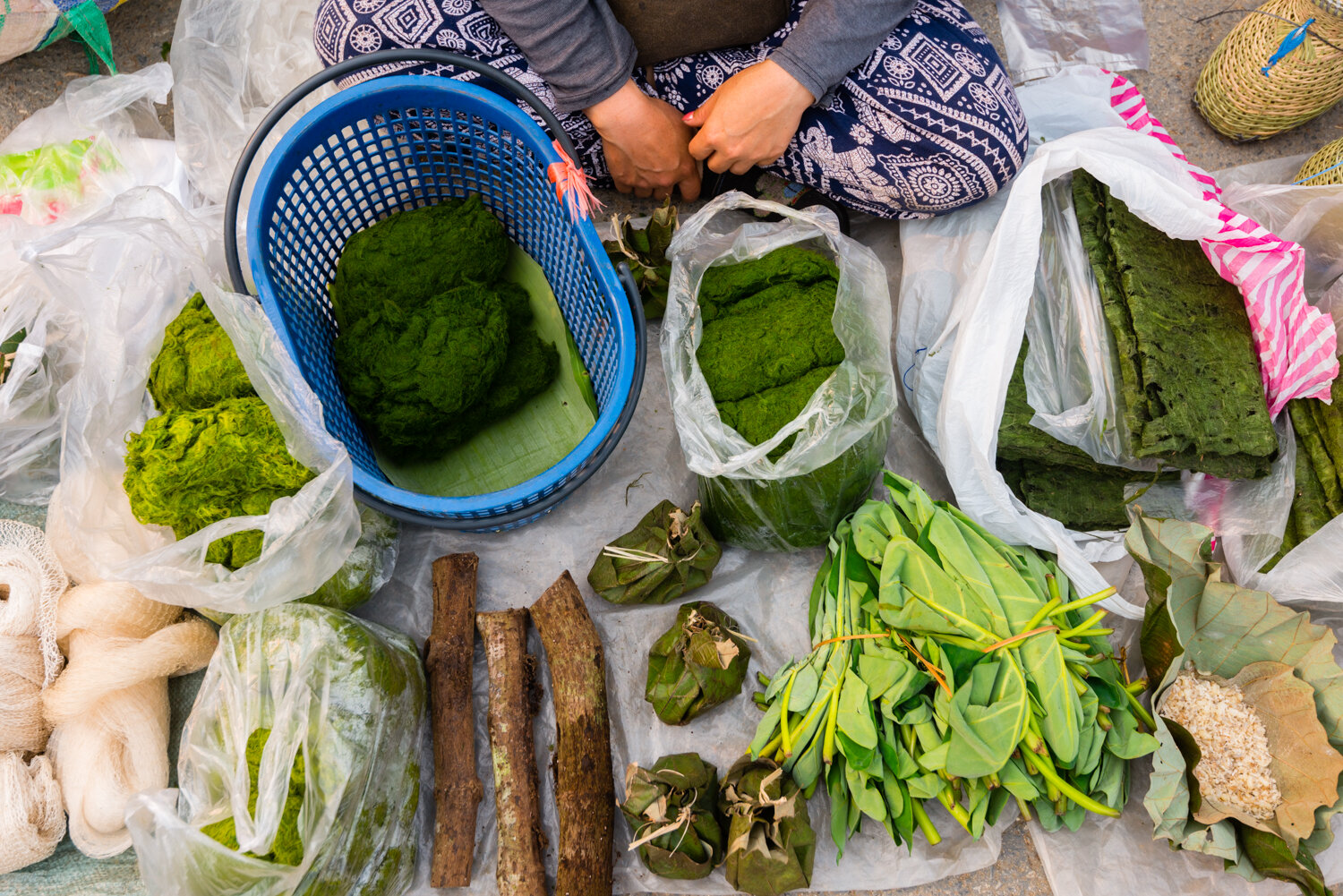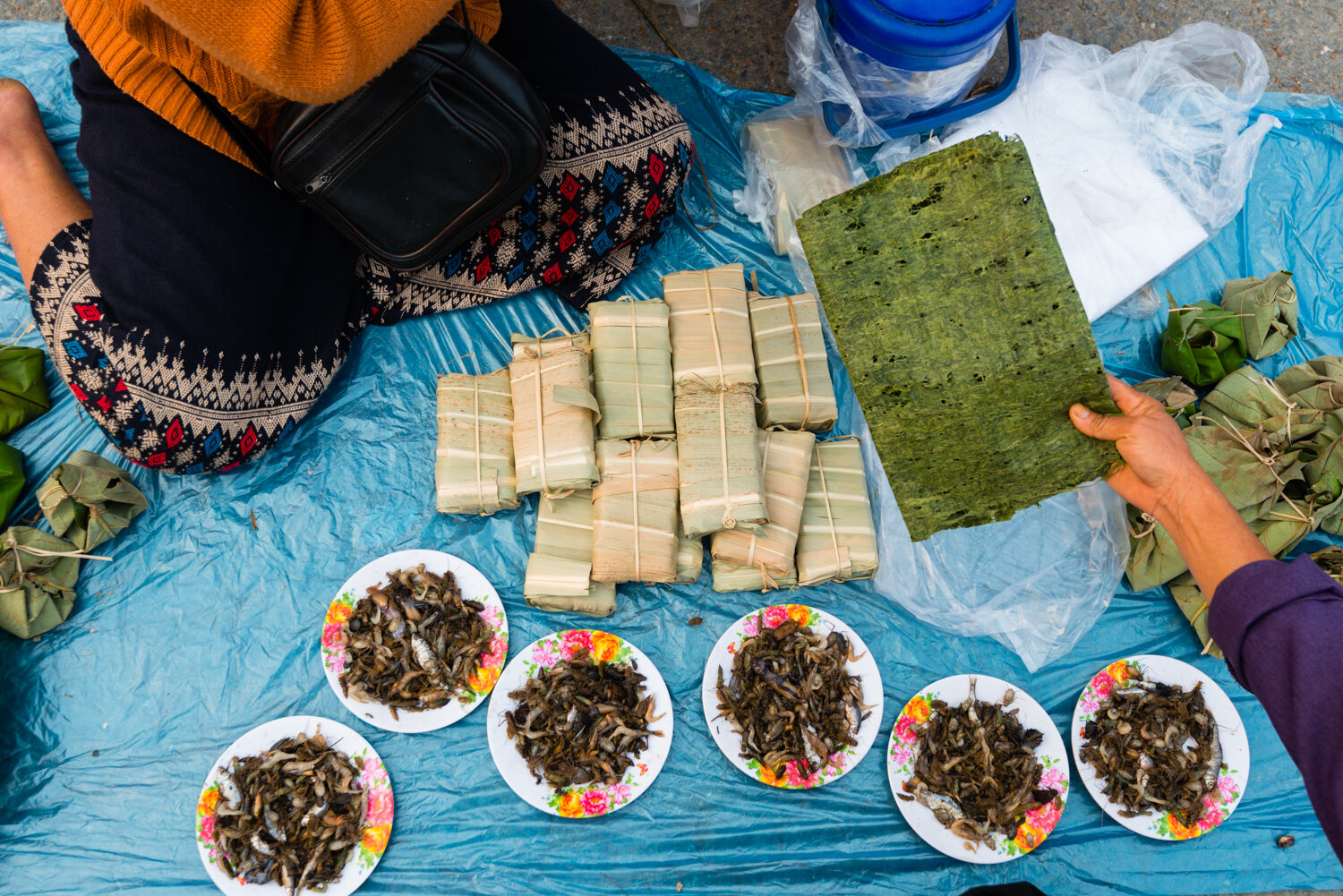Like many rural villages in northern Thailand, Ban Huay Kon, located at the northernmost tip of Nan Province, just across the border with Laos, hosts a traveling market a couple days a week. Arrive on market day before 8am, and it is, frankly, a pretty unexceptional affair: itinerant Thai vendors selling the type of utilitarian wares – knives, underwear, towels, seeds, pesticide sprayers, factory-farmed meat and fish – found at similar markets across the country. Yet come 8am, immediately after the Thai national anthem has been broadcast through loudspeakers, the border opens, releasing a small flood of Lao women. Wearing long, hand-woven skirts and flip-flops, straining under bent bamboo poles supporting bags of goods and yet somehow still running, they’re bound for Thailand. As soon as they reach the designated market area, they throw down a plastic sheet, unload their bags and open shop. Crowds of Thai shoppers and gawkers follow on their heels, and in many cases, before the vendors have even unpacked, they’ve have already had a peek into their bags or have unwrapped their banana leaf packages to see what’s inside.
The Thais drive all the way to Ban Huay Kon’s market for edible items from the woods of Laos – the kind of stuff that nowadays is hard to find in Nan, where so much of the forest has been lost. These include wild delicacies such as insect larvae, betel nut, dried frogs, mushrooms, tiny freshwater fish, edible roots and river weed. Others have come for the type of rustic, handmade items that have largely been relegated to nostalgia or antiques in Thailand: wood sticky rice steamers, hand-woven cloth, chunky silver jewelry, baskets and toys made from bamboo. And while all these wares come from Laos, in an oblique way, they serve as a window into a Thailand that, only a few decades ago, used to exist.












